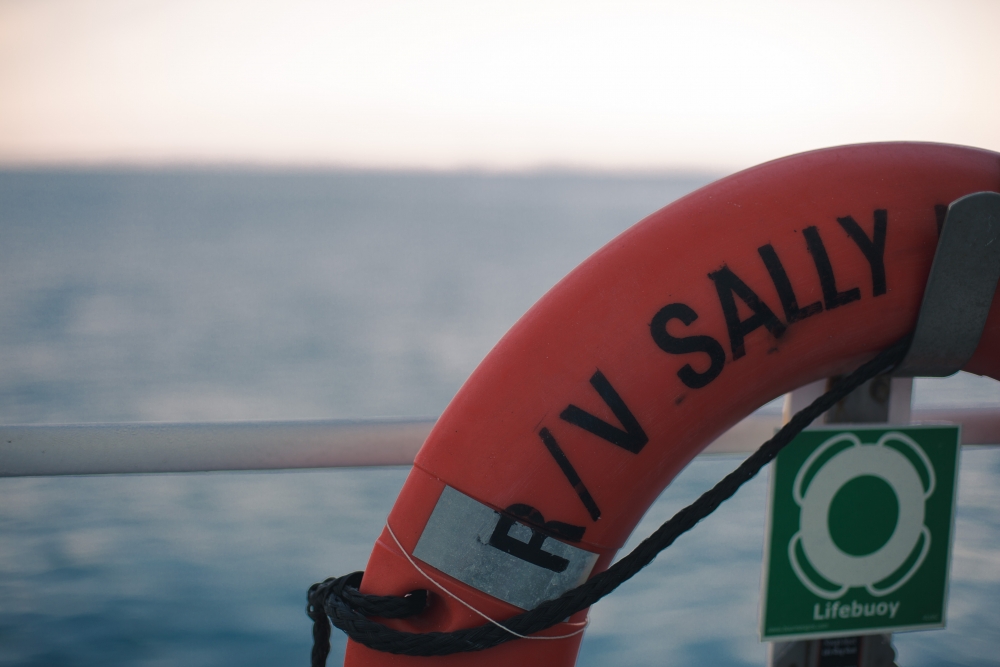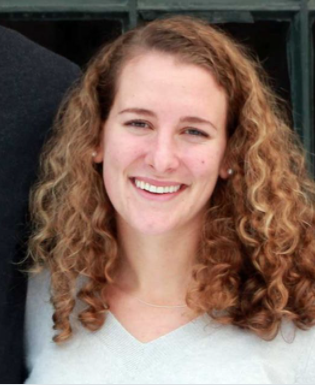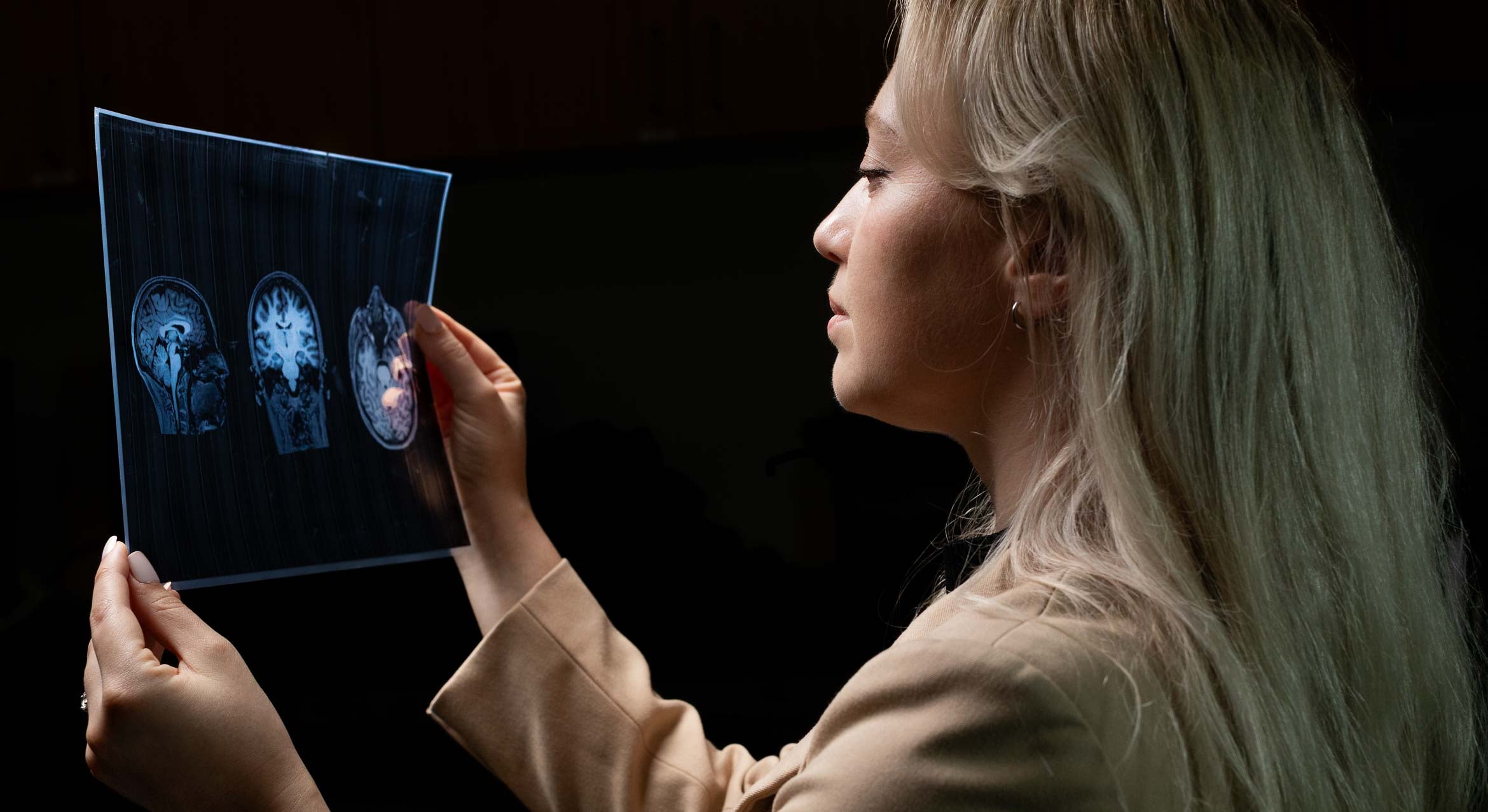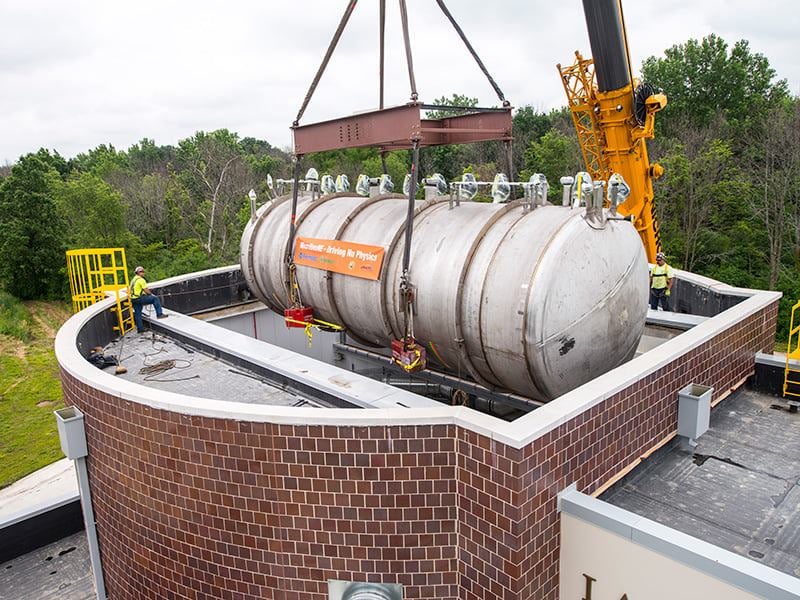
A Serendipitous Study

After learning in early 2017 that they had received research funding as members of a graduate student team, Sasha Kramer and Kelsey Bisson spent months planning the research cruise that would take place that December. But their plans changed when the Thomas Fire, which would become the largest California wildfire in history at that time, spread from Ventura to Santa Barbara County.
“It was a tense time for everyone,” Bisson recalled of those days, fraught with evacuation notices along with cruise preparations. As the science team dodged the smoke and packed their things, they reconsidered their approach: leave for more distant waters and clearer air, or see how the Thomas Fire, with its growing dark canopy of smoke and ash, affected the biology and chemistry of the Santa Barbara Channel?
They decided to lean in.
“We had a team meeting and decided we wanted to go and just take advantage of it to do what we could,” Bisson said.
The object of this part of their study was to describe the phytoplankton community, microscopic organisms that are foundational to the marine food web. Composed of several broad groups, including bacteria and single-celled algae, phytoplankton live in the sunlit upper regions of the ocean, not only feeding a diversity of animals in the Channel, from tiny zooplankton to whales, but also performing important roles in the ocean’s carbon and nutrient cycles. An imbalance in the phytoplankton community could lead to a range of phenomena, from toxic blooms to oxygen-free dead zones, affecting all who live in and use the Channel.
“Our two hypotheses were that either the ash contains nutrients that could be used by phytoplankton once it dissolved in the ocean water that could potentially increase phytoplankton growth,” Kramer said, “or that the darkness in the skies during the day might limit the light that they could use for photosynthesis.”
Their research is now published in the Journal of Geophysical Research: Oceans. The project was funded by UC Ship Funds program at the Scripps Institution of Oceanography; the National Academies Keck Future Initiative supported the art component of the research cruise.
What’s in the Water
Sampling seawater in the Channel over the course of the week at the height of the Thomas Fire, the all-graduate student research team led by Bisson and Nicholas Baetge, also of the Interdepartmental Graduate Program in Marine Science, used several approaches to analyzing the water’s chemistry and resident microorganisms.
The original plan for research — an investigation of the daily dynamics of phytoplankton, zooplankton and bacteria — was still in play, but now the team was also interested in the direct and more immediate impacts of ash and cloud cover. This shift led to some adjustments in their sampling schedule and locations, and to the eleventh-hour acquisition of an imaging flow cytometer (IFCB, McLane Labs) from colleague Alexis Fisher’s lab at UC Santa Cruz. The technology would prove to be invaluable to the real-time snapshot of the water the researchers were trying to capture.
“There might be a chemical signature of ash in the water,” said Kramer, “but it’s diluted quickly, and it would be difficult to differentiate between ash and other sediment or detrital particles.” The IFCB allowed the researchers to image ash and sediment, and also get images of the local phytoplankton populations at the time of their sampling.
Laying a Foundation
The researchers note that they were ultimately unable to draw any definitive conclusions about the impact of California wildfires on the nearby ocean, due to the compressed scope of their study compared to the broader examination of competing environmental influences in the Channel.
There were some differences between the phytoplankton community before and during wildfire. One of their main findings was that dinoflagellates dominated the population (up to 90%) during the time of sampling, whereas during a typical Santa Barbara Channel winter, diatoms and picophytoplankton are abundant in the water. This finding, according to the study, “could be attributed to a number of factors, acting either individually or together,” including favorable responses to nutrients brought by the fire, the well-documented ability of this phytoplankton group to survive environmental disturbance, or transportation of this group via currents into the Channel from elsewhere.
Similarly, in the week of sampling, the authors found differences in surface ocean chemistry and temperature, but none that can point to conclusive wildfire-related trends.
“We did see from our analysis that December 2017 was different from every other winter that we’ve been collecting data in the Santa Barbara Channel — the fire was an additional disruption to an already different system in that winter,” Bisson said.
The data should be seen as a set of baseline measurements, the researchers said — a jumping-off point for further study and long-term monitoring of what could become an emerging phenomenon of wildfire-influenced coastal oceans, given California’s now year-round fire season. By the time the scientists were deep in the review and resubmissions process of their paper, the Thomas Fire had lost its rank and become the seventh largest wildfire in California.
“We know there will be more and worse wildfires, and there have been,” Kramer said. “I think it’s possible that this type of serendipitous opportunity could come up again for another group. And I hope that this type of work would encourage them to take advantage of that.”



